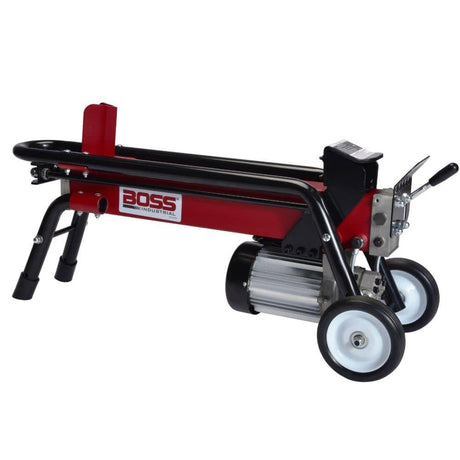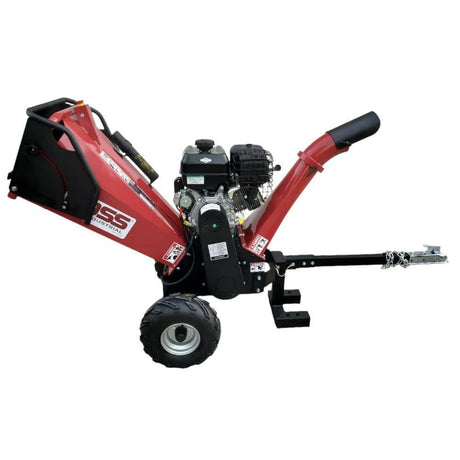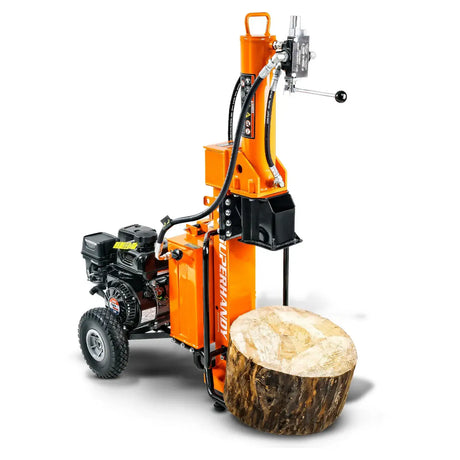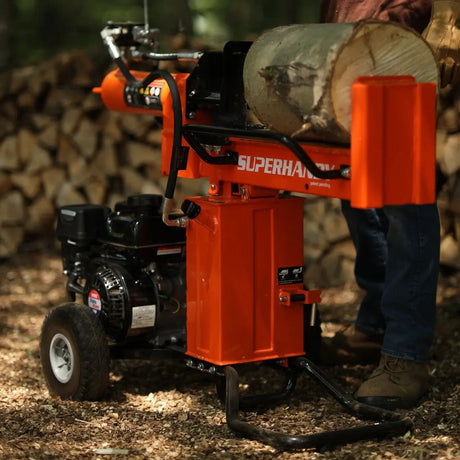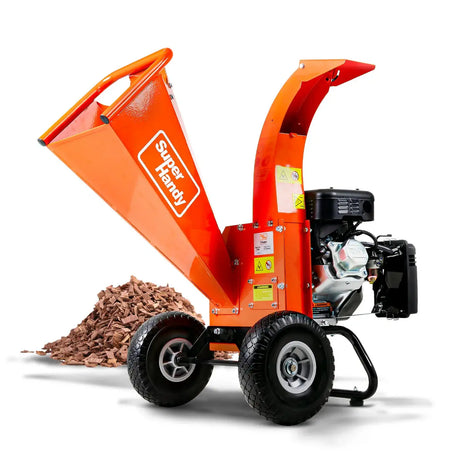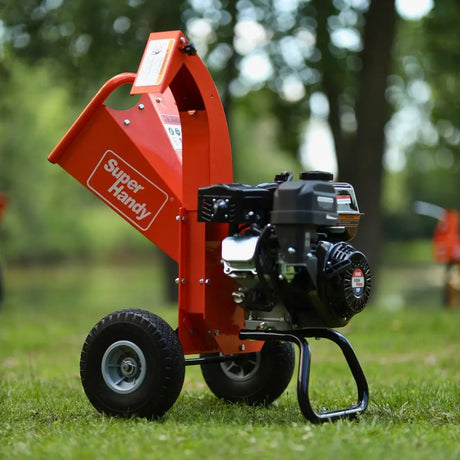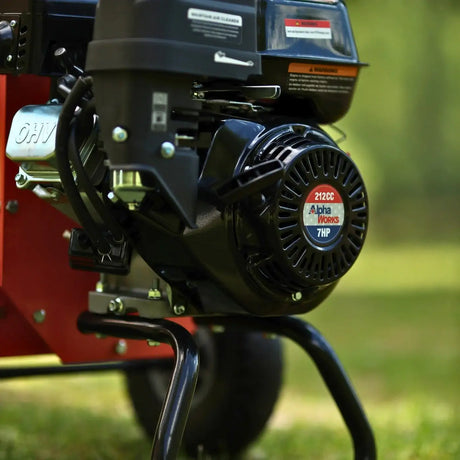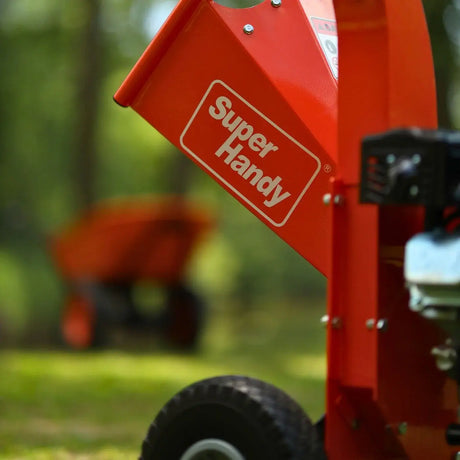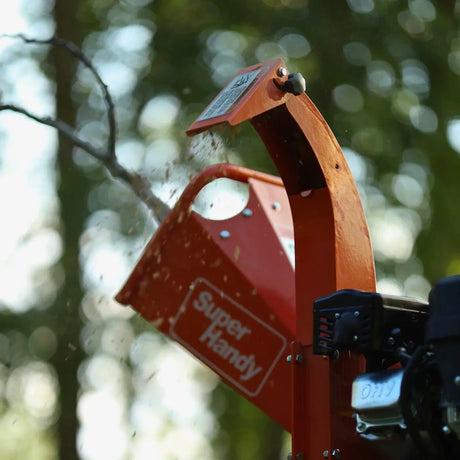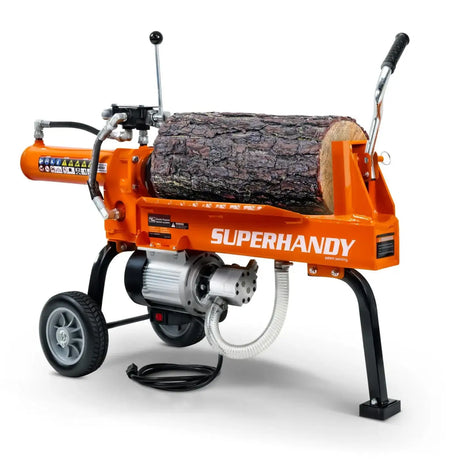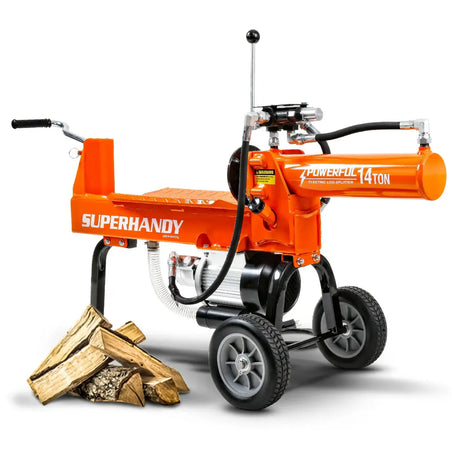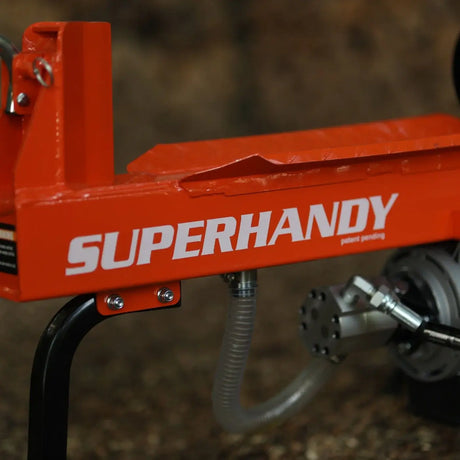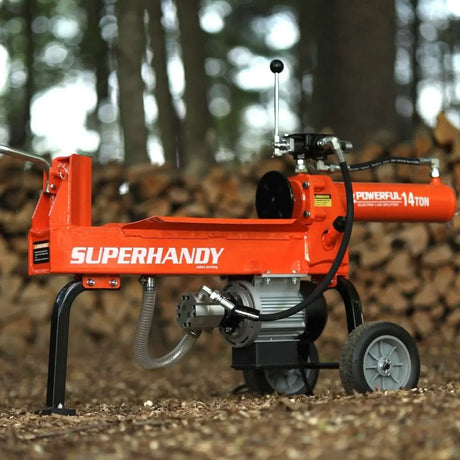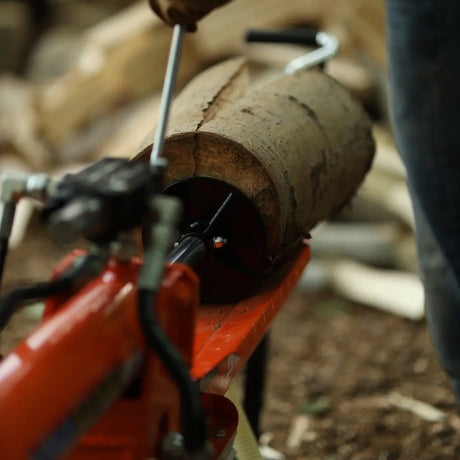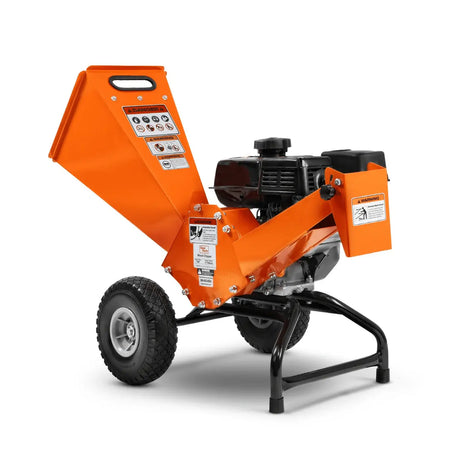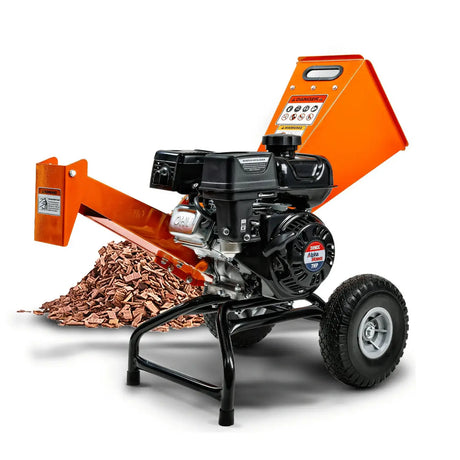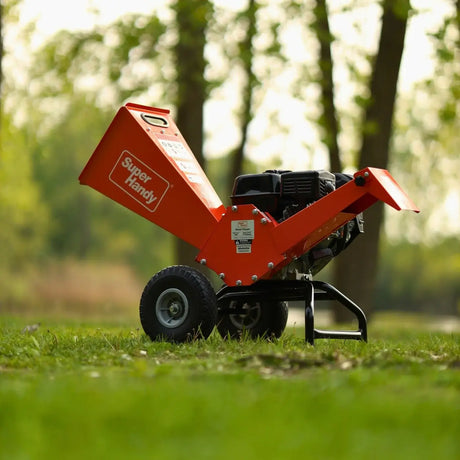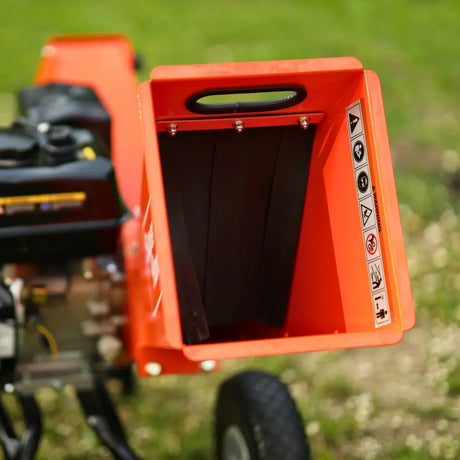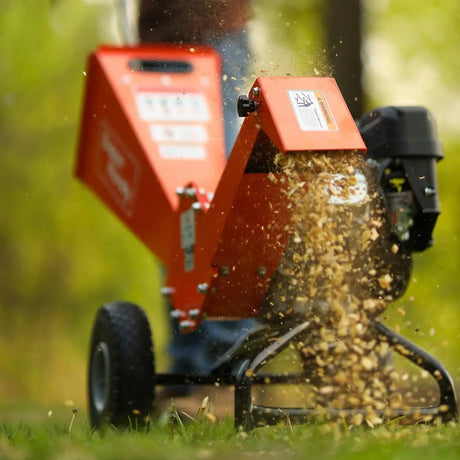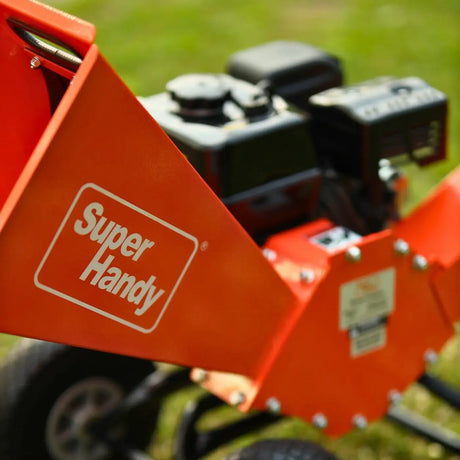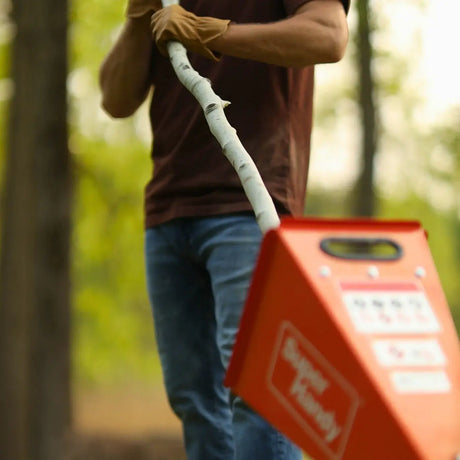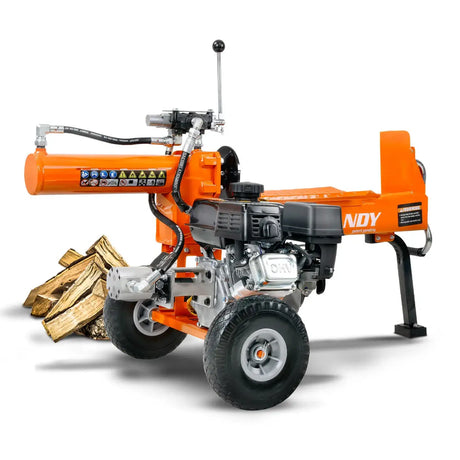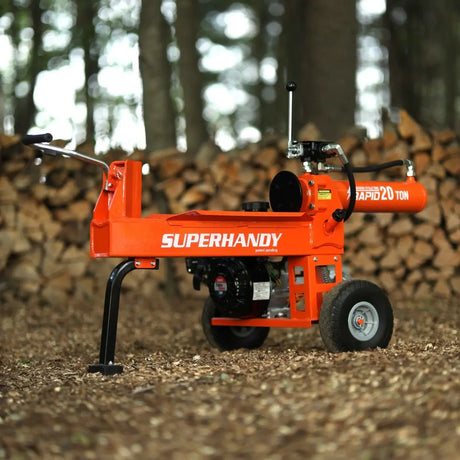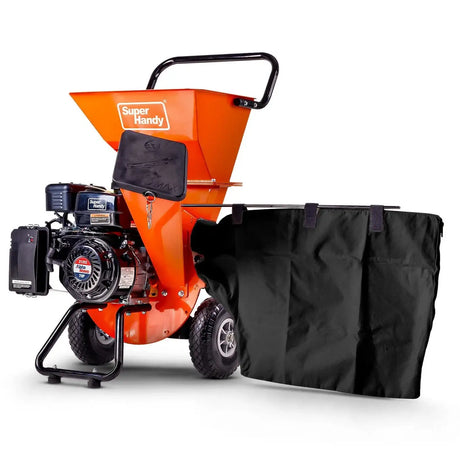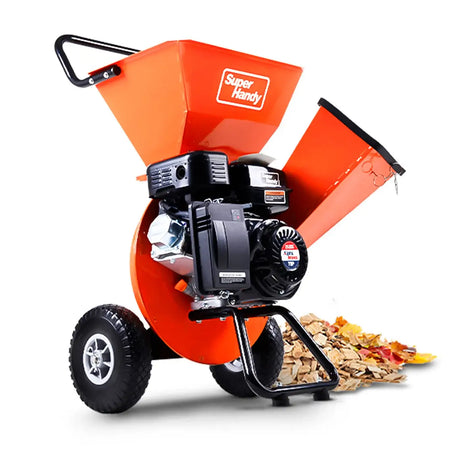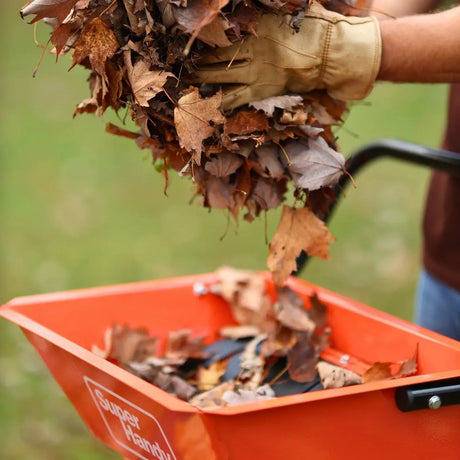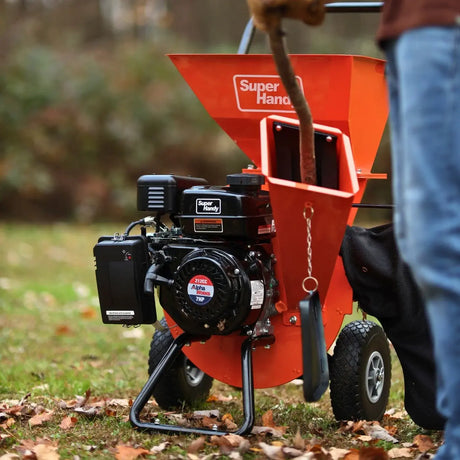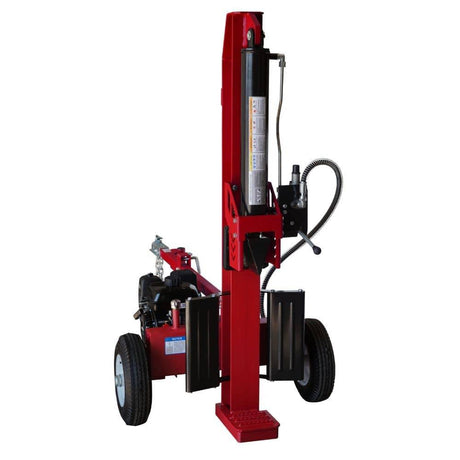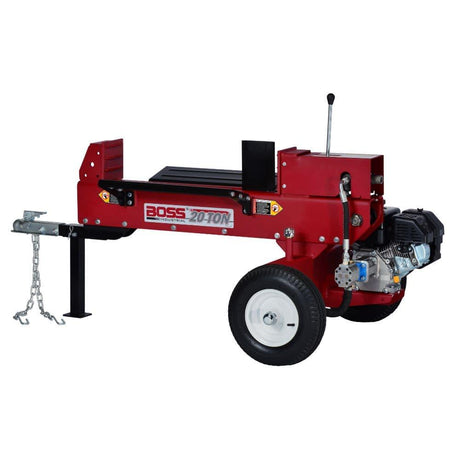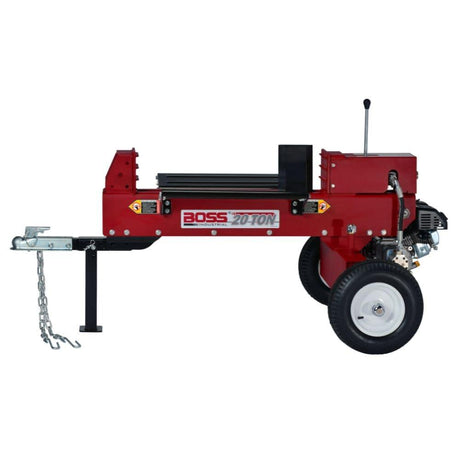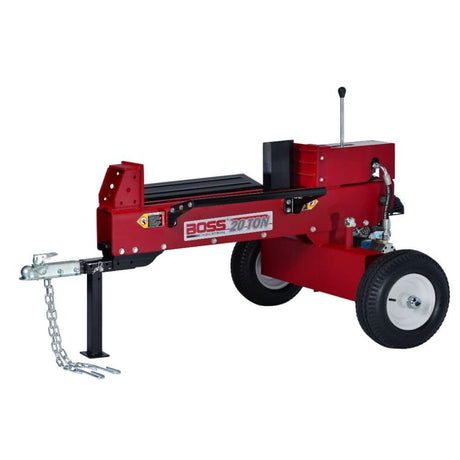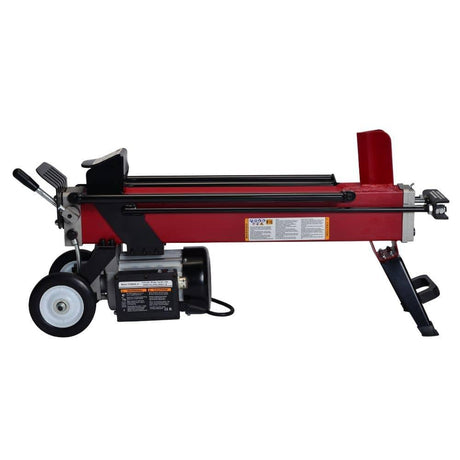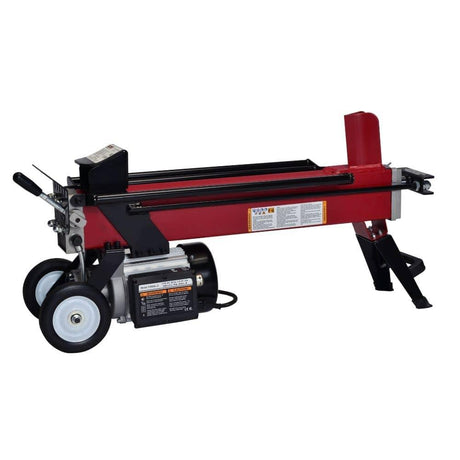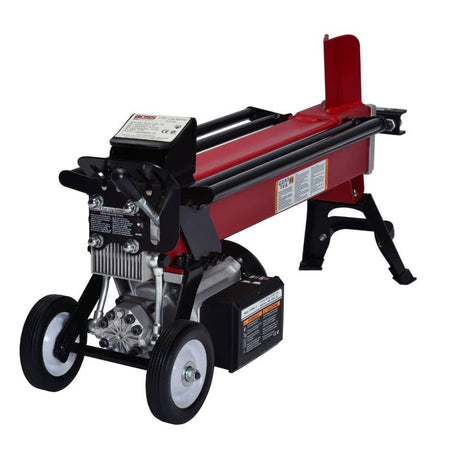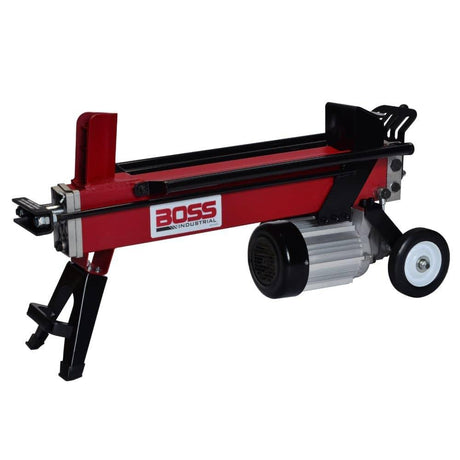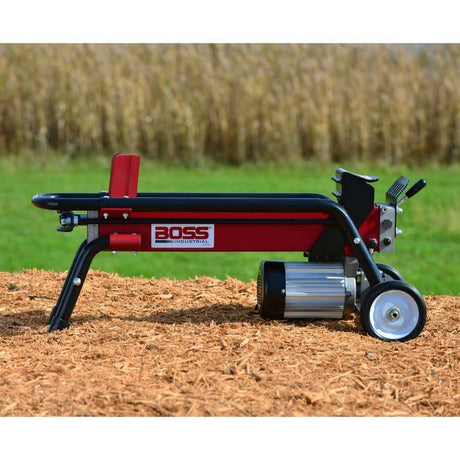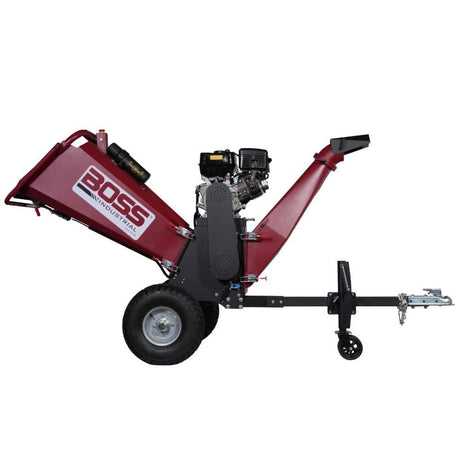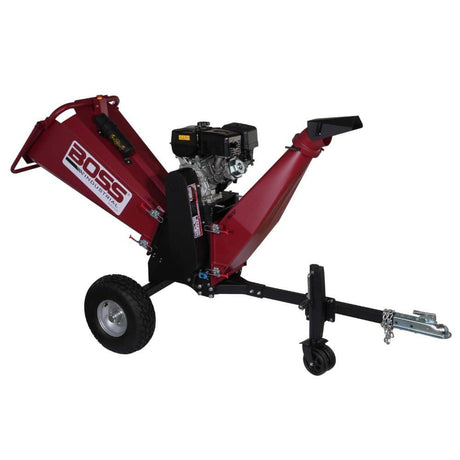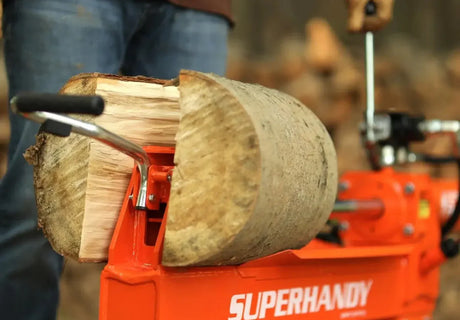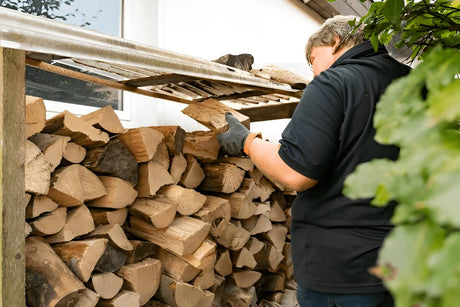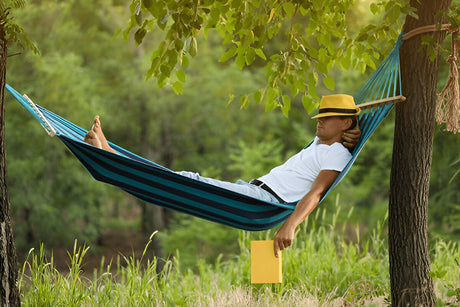Step-by-Step Cleanup After Stump Grinding
Once you finished with your stump grinder and the tree stump is gone, the real work begins. You're left with a mess-wood chips, sawdust, a shallow pit, maybe even roots sticking out. Here's how to clean up properly and prep the area for whatever comes next.
Looking for creative ways to repurpose those grindings? Check out our What to Do With Stump Grinding Debris: 3 Smart and Easy Ideas for tips on turning leftovers into mulch, compost, and more.
If you want to choose the right grinder for cleanup, see our Stump Grinder 101: Complete 2025 Buyer Guide.

Remove Wood Chips and Sawdust the Right Way
Don't leave them piled up. While grindings might look harmless, they can:
- Deplete nitrogen from the soil (bad for grass and plants)
- Attract pests if left in moist piles
- Block proper drainage if the area stays mulched too thick
What to do:
- Rake and shovel out the bulk of the chips.
- Sift out fine sawdust that might be buried deeper.
- If you plan to reuse them, set them aside in a dry, ventilated spot.
| Risk of Leaving Grindings | Why It’s a Problem | What to Do Instead |
|---|---|---|
| Nitrogen depletion | Harms grass and plant growth | Remove chips and add compost/topsoil |
| Pest attraction | Moist piles invite insects or rodents | Store dry in a ventilated area |
| Drainage issues | Thick mulch blocks water flow | Keep mulch depth under 6 inches |
What to Do with Leftover Stump Grindings (Mulch, Compost, or Disposal)
You've got options:
- Mulch: Great for trees, pathways, or non-edible plants. Apply 3-6 inches thick, but keep it away from trunks and stems.
- Compost: Mix with green waste (grass clippings, food scraps) to balance carbon and nitrogen.
- Disposal: If you're not reusing, check with your local dump or green waste center. Some will take it for free.
| Condition of Grindings | Recommended Action | Why |
|---|---|---|
| Clean, dry, and weed-free | Reuse as mulch or compost | Safe and nutrient-rich |
| Diseased or chemically treated | Dispose | Avoid spreading pathogens or chemicals |
| Mixed with gravel or debris | Haul away | Poor quality for landscaping or composting |
| Excessive quantity | Donate or dispose | More than needed for your landscape |
Pro tip: Never till fresh grindings into garden soil. It disrupts nutrients and may encourage fungus.
For more ideas, see what to do with stump grinding debris.

Not sure how deep your machine went? Learn how stump grinders work and what they leave behind.
Pull Out Remaining Roots and Level the Area
Even after stump grinding, some roots can remain-especially surface ones. Here's what to do:
- Use a pick or mattock to pull out exposed roots.
- Cut them back with a saw if they're too deep to remove.
- Fill the cavity with topsoil, not grindings.
- Compact lightly and rake level with the surrounding ground.
Why it matters: If you plan to reseed or replant, roots left in the ground can cause lumps, regrowth, or drainage issues.
Curious about timing? Find out how long stump grinding takes.
When You'll Need to Haul Debris vs. Reuse It
Some grindings are reusable. Others? Not worth keeping.
Haul it away if:
- The tree stump left was diseased or chemically treated
- The chips are full of gravel or lawn debris
- You have more than you can realistically use
Reuse it if:
- It's clean, dry, and free of weeds
- You need mulch for beds, trails, or compost piles
- You're working on erosion control or insulating plant roots
| Step | Why It Matters | Tip |
|---|---|---|
| Remove leftover grindings | Prevents nitrogen loss and uneven settling | Check for deep roots before adding soil |
| Add clean topsoil | Supports healthy new growth | Overfill by 1–2 inches to allow for settling |
| Tamp and rake level | Avoids dips and puddles in the future | Let it sit for 1–2 weeks before planting |
Bottom line: A little effort here saves you a lot of headaches later-especially if you're planning to plant trees or landscape the spot.

Preparing the Soil for Replanting or Landscaping
Once the grinding process is done and the mess is cleaned up, the next step is getting the soil ready. This part matters more than most folks think-especially if you're planning to grow anything there again.
How to Fill and Regrade the Stump Hole Safely
That shallow crater left behind? Don't just pack it with leftover mulch. Do it right:
- Remove any remaining roots or grindings from the hole left.
- Backfill with clean topsoil, tamping lightly as you go to prevent settling.
- Overfill the area slightly-about 1-2 inches above ground level. It'll compact naturally over time.
- Rake and smooth the surface to match the surrounding grade.
Pro tip: Let it sit for a week or two before seeding or planting to allow for settling.
Restore Soil Health: Compost, Fertilizer, and Topsoil Tips
The Grinding process for a large tree stump doesn't just leave a hole-it can leave soil stripped of nutrients.
- Topsoil: Use quality topsoil to fill and thin layer over the surface.
- Compost: Mix in compost for organic matter and microbial life.
- Starter fertilizer: Choose one with a balanced NPK (like 10-10-10) if you're sow grass seed or shrubs.
| Material | Purpose | Best For |
|---|---|---|
| Compost | Adds organic matter and microbes | All planting projects |
| Starter fertilizer | Rebalances nutrients (NPK) | Grass, flowers, shrubs |
| Topsoil | Fills and smooths surface | Leveling and base layer |
Real-life example: A client once skipped this step and couldn't get grass to take for months. After mixing in compost and fertilizer, it filled in within weeks.

Why Nitrogen Rebalancing Matters After Stump Grinding
Here's something most people miss: wood chips rob nitrogen from the soil as they break down.
- This can stunt plant growth, especially for grass or young plants.
- If you left grindings behind or used mulch in the area, you'll need to supplement nitrogen.
What to use:
- Quick-release nitrogen for immediate correction.
- Slow-release nitrogen to support long-term soil balance.
When and How to Test Your Soil Before Planting
If you want to go the extra mile-and avoid wasting time-test the soil.
1. Grab a basic soil test kit from a garden center or county extension office.
2. Test for:
- pH and nutrient levels balance (ideal pHrange: 6.0-7.0 for most turf/landscaping)
- Nitrogen, phosphorus, and potassium levels
3. Amend accordingly before planting.
| What to Test | Ideal Range/Level | Why It Matters |
|---|---|---|
| pH | 6.0–7.0 | Most plants thrive in this range |
| Nitrogen (N) | Moderate-high | Essential for leaf and grass growth |
| Phosphorus (P) | Medium | Supports root development |
| Potassium (K) | Medium | Helps plant resilience and health |
Bonus tip: If you're planting edibles or replanting trees, a soil test isn't optional-it's essential.

Best Landscaping Options for the Area After a Stump Is Removed
Once the stump grinding's done and the ground is leveled, you're left with a blank slate. What you do next depends on your goals-but whether you're after curb appeal or functionality, there's a smart path forward. Here's what to consider.
Replanting Grass: Timing, Technique, and Seed Selection
If you just want the lawn to look normal again, grass is the go-to.
Timing: Wait a week or two after leveling to let the soil settle. Best seasons are spring and early fall when temps are mild and moisture is consistent.
Technique:
- Rake the soil smooth.
- Broadcast grass seed evenly.
- Press seeds into soil with a roller or by walking over it.
- Water lightly every day for 10-14 days.
Seed tips: Choose a blend that fits your region-fescue or bluegrass in the north, Bermuda or zoysia in the south.
Pro tip: Skip the quick-fix sod if the soil hasn't been amended properly-it'll struggle to root.

Planting a New Tree: How Far Away from the Old Stump?
Want to plant another tree in that spot? You can-but give it space.
- Distance: At least 3 feet from the old tree stump site.
- Why: Decomposing roots can lead to soft, unstable ground and can even carry fungi or disease.
- Soil prep: Use a mix of compost and topsoil, and avoid leftover wood chips in the planting hole.
Real talk: I've seen trees planted directly on top of old roots-most don't make it past their first year.
Creating a Garden Bed or Flower Area
If you're tired of mowing or want something low-maintenance, a garden bed is a great option.
- Prep: Clear all grindings and till the top 6-8 inches.
- Amend: Mix in compost or manure to restore nutrient levels balance.
- Design: Go with perennials or native flowers for minimal upkeep.
- Borders: Add edging or rocks to define the space and control weeds.
Bonus tip: All the chips helps retain moisture and suppress weeds-but make sure it's aged or composted first.
Unique Ideas: Zen Garden, Water Features, and Container Gardens
Want something a little different? You've got options.
- Zen garden: Spread gravel, place a few large rocks or driftwood, and tuck in low plants like moss or bonsai.
- Water feature: Install a bird bath, small fountain, or pond liner for an instant focal point.
- Container garden: Perfect if the soil's still recovering. Use large planters with flowers, herbs, or dwarf trees.
Real example: A client once turned their old stump spot into a rock-lined mini patio with a bench and flower pots-it became their favorite place to sit.

How to Use Stump Grindings Effectively as Mulch or Compost
Leftover stump grindings don't have to go to waste. With a little prep, you can turn them into a useful resource for your yard. Here's how to use them right-without harming your soil or plants.
Preparing Grindings for Use
Not all grindings are ready to go straight into your yard. First, prep them properly:
- Rake out rocks, dirt, and large root chunks.
- Let the pile dry out for a few days in a sunny spot to reduce moisture.
- Mix with green material (like grass clippings or leaves) to balance the carbon-heavy wood chips.
Pro tip: If the tree was diseased or chemically treated, avoid reusing the grindings altogether. Better to dispose of them.
Where and How to Apply Mulch Safely
Wood chips make a great mulch-if used in the right way and in the right place.
Best places to use stump mulch:
- Around trees and shrubs
- Along walking paths or flower beds
- In erosion-prone areas
Application tips:
- Spread mulch 3 to 6 inches deep
- Keep mulch 2-3 inches away from trunks or stems to prevent rot
- Reapply or top off every few months as it decomposes
| Area Type | Mulch Depth | Keep Distance From Plants | Notes |
|---|---|---|---|
| Trees and shrubs | 3–6 inches | 2–3 inches from trunk | Prevents rot and fungal growth |
| Flower beds and paths | 2–4 inches | Not needed for annuals | Replenish every few months |
| Erosion-prone areas | 4–6 inches | N/A | Use coarser grindings for better control |
Common Mistakes to Avoid with Fresh Wood Chips
Fresh grindings can actually hurt plant growth if you're not careful.
- Don't till them into the soil - They tie up nitrogen as they decompose.
- Avoid using on vegetable gardens - Especially if not composted yet.
- Don't apply too thickly - Too much mulch holds moisture and can lead to mold or root suffocation.
Reminder: Wood chips are great on top of soil, not mixed in.
Turning Grindings into Compost: A Step-by-Step Process
If you've got time and space, composting grindings turns waste into gold. Here's how:
- Create a pile: Mix grindings with high-nitrogen materials (like food scraps, coffee grounds, or grass clippings).
- Keep it moist: Like a wrung-out sponge-damp, not soggy.
- Turn the pile every 2-3 weeks to introduce oxygen and speed decomposition.
- Wait 3-6 months (or longer in cold weather) until it's dark, crumbly, and earthy-smelling.
End result: Nutrient-rich compost perfect for flower beds, trees, or new plantings.
| Step | Why It’s Important | How Often |
|---|---|---|
| Mix with nitrogen-rich greens | Balances high-carbon wood content | When creating the pile |
| Keep pile damp | Promotes decomposition | Check moisture weekly |
| Turn for aeration | Speeds up composting | Every 2–3 weeks |
| Wait for breakdown | Ensures safe use on plants | 3–6 months (longer in cold) |

Root Decay and Long-Term Ground Maintenance
Even after the stump is gone and the chips are cleared, the roots are still there-just out of sight. Understanding what happens underground (and how to manage it) helps you avoid surprises later on.
How Long Roots Take to Decompose
Tree roots don't vanish overnight. The timeline depends on tree type, soil, and climate.
To learn about root depth by species and when grinding is enough, see our tree root depth guide.
- Softwood roots (pine, fir): 3-7 years
- Hardwood roots (oak, maple): 5-10+ years
- Large root systems may stick around even longer
Wetter, warmer climates speed things up. In dry or compacted soil, decomposition slows to a crawl.
| Tree Type | Estimated Decomposition Time | Notes |
|---|---|---|
| Pine, Fir (softwood) | 3–7 years | Faster in warm, moist soil |
| Oak, Maple (hardwood) | 5–10+ years | Slower due to dense wood |
| Large root systems | 10+ years | Especially in compacted or dry soil |
How to Speed Up Root Decomposition Naturally
If you're not in a hurry, nature will handle it. But if you want to move things along, here's what helps:
- Drill holes in large roots and fill with nitrogen-rich fertilizer (like blood meal or urea).
- Keep the soil moist-decomposition needs water.
- Cover the area with a tarp or mulch to trap heat and retain moisture.
- Avoid compacting the soil-aeration allows microbes to work faster.
Some folks use commercial stump/root rot products. Just follow directions carefully and avoid planting nearby until it breaks down fully.
Spotting and Fixing Ground Settling Over Time
As roots decay, the ground may sink-sometimes months or even years later.
What to watch for:
- Soft, spongy spots where the stump used to be
- Uneven ground or dips forming under foot traffic
- Poor drainage or pooling water in that area
Fix it like this:
- Fill low spots with fresh topsoil
- Tamp down gently and reseed or replant
- Recheck seasonally and top off as needed
When It's Safe to Replant in the Same Spot
You can replant in the same spot-but timing is everything.
- Wait at least 6-12 months before planting anything with deep roots (like trees or shrubs).
- For grass or shallow-rooted flowers, 4-6 weeks is usually enough if you've removed grindings and rebalanced the soil.
- Check for lingering root pieces or fungal growth before replanting.
If you’re curious which trees might regrow after grinding, check our full species guide.
| What You’re Planting | Wait Time After Grinding | Additional Notes |
|---|---|---|
| Grass or flowers | 4–6 weeks | Once grindings are removed and soil rebalanced |
| Trees or shrubs | 6–12 months | Ensure old roots are decomposed or removed |
| Container garden | Immediate | Great option while soil restores |
Rule of thumb: If the ground's firm and healthy, and no roots are left near the surface, you're good to go.



